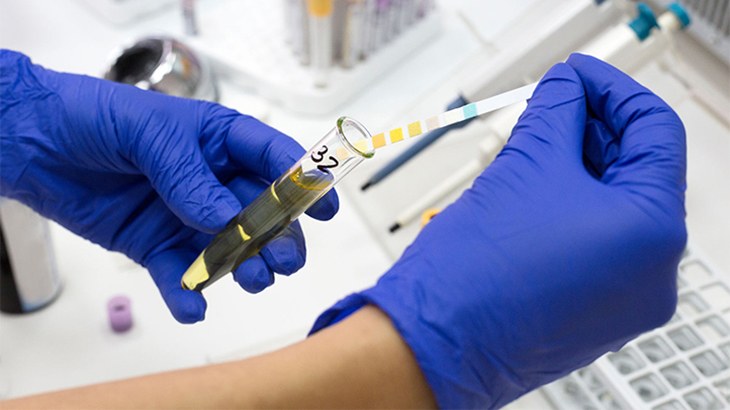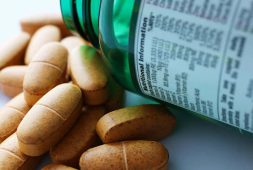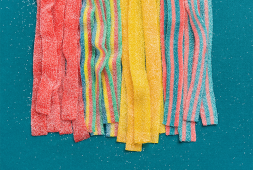
After a century-long quest, scientists have triumphantly unveiled the long-elusive solution to a medical enigma: the enzyme accountable for the distinctive coloration of urine. In a landmark study published on January 3 in Nature Microbiology, researchers have pinpointed the elusive culprit, bilirubin reductase, responsible for the golden tint of urine.
Led by Brantley Hall, PhD, an assistant professor in the department of cell biology and molecular genetics at the University of Maryland in College Park, this groundbreaking discovery offers profound insights into the physiological mechanisms underlying urine coloration. Not merely a matter of curiosity, understanding the origins of urine’s hue holds significant implications for clinical diagnostics and the development of novel therapeutic interventions.
The revelation of bilirubin reductase’s role not only demystifies the age-old question of why urine appears yellow but also opens avenues for innovative approaches to disease treatment. By shedding light on this fundamental aspect of human biology, the study paves the way for potential breakthroughs in the management of various medical conditions.
Moreover, beyond its implications for individual health, this discovery underscores the remarkable progress achieved through relentless scientific inquiry. It serves as a testament to the enduring pursuit of knowledge and the transformative impact of interdisciplinary research collaborations. In unraveling the mysteries of urine coloration, researchers have not only illuminated a fundamental aspect of human physiology but also laid the groundwork for future advancements in medical science.
“Although more research is needed, this finding could lead to improved treatments for jaundice and inflammatory bowel disease,” Dr. Hall shared.
Jaundice Research Opened Doors to an Explanation
Hall and his team didn’t start the experiment to know why urine is yellow in color. “Our lab studies gut microbes; we’re interested in understanding the functions these microbes perform and how that relates to human health,” Hall said.
In this research endeavor, scientists delved into the intricate relationship between the gut microbiome, the vast community of microorganisms residing in our digestive system, and jaundice, a common condition characterized by the yellow discoloration of a newborn’s skin. This discoloration stems from the accumulation of bilirubin, a yellow pigment, in the infant’s bloodstream. The immaturity of the infant’s liver renders it incapable of efficiently metabolizing and eliminating bilirubin, leading to its buildup and subsequent manifestation of jaundice.
By exploring the potential links between the gut microbiome and jaundice, researchers aimed to shed light on novel therapeutic avenues or preventive strategies for this condition.
Bilirubin Reductase- the Enzyme Behind It All
For more than a century, scientists have been aware that bilirubin in the bloodstream is converted into urobilin molecules in urine, resulting in a yellow hue. However, the specific enzyme or group of enzymes in the gut responsible for this process remained unidentified until recently.
Hall and his team came upon the discovery that gut microbes encode (make) bilirubin reductase, which then converts bilirubin into a colorless byproduct that they call urobilinogen. “Urobilinogen then spontaneously degrades [breaks down] into urobilin, which is responsible for the yellow color,” Hall said.
Bilirubin Often Not in Babies Suffering from Jaundice and People Diagnosed with IBD
The researchers are optimistic about the potential health significance of this discovery. While bilirubin reductase is typically found in nearly all healthy adults, the scientists observed its frequent absence in newborns.
“This absence may contribute to infant jaundice and the formation of pigmented gallstones,” said Hall. If this hypothesis is confirmed, one approach to the treatment of infant jaundice might be to add the bacteria into the body through a probiotic strategy, he explained.
The enzyme is often lacking or altogether absent for those with inflammatory bowel diseases such as Crohn’s disease or ulcerative colitis, as per the researchers. “The absence of bilirubin microbes may also contribute to the formation of gallstones, which has been observed in some people with inflammatory bowel disease,” Hall said.
Further investigation is required to validate these connections before drawing any definitive conclusions. Nevertheless, these discoveries underscore yet another compelling rationale for the essential role our gut microbiome plays in human health, he also said.
It’s Unlikely That Dehydrated Individuals Produce More Bilirubin
The hue of urine is frequently employed as an indicator of hydration status, with a deeper yellow shade suggesting possible dehydration. How does bilirubin factor into this assessment?
“People ask me if there is more bilirubin produced when you’re dehydrated, and we don’t think that’s the answer. We think there’s basically a constant amount of bilirubin produced by gut microbes, and the color that you see is a factor of hydration,” said Hall.
What Color Yellow Should Urine Be
Fluctuations in urine color are typical day to day, but ideally, it should maintain a shade within the yellow spectrum, as advised by the Cleveland Clinic. Experts suggest that urine appearing as pale straw or amber indicates proper hydration.



